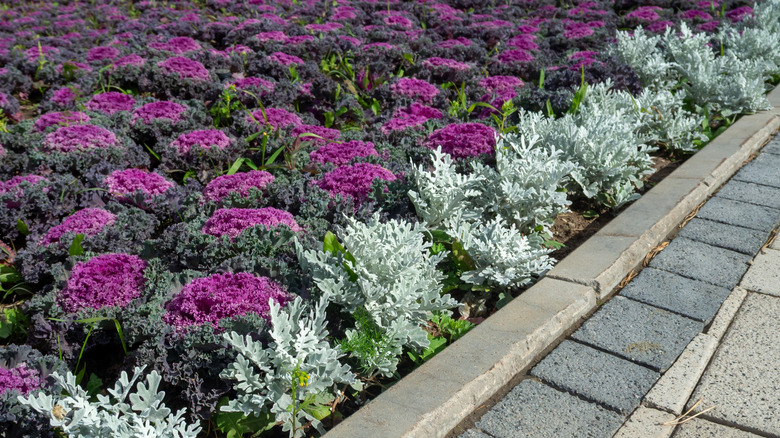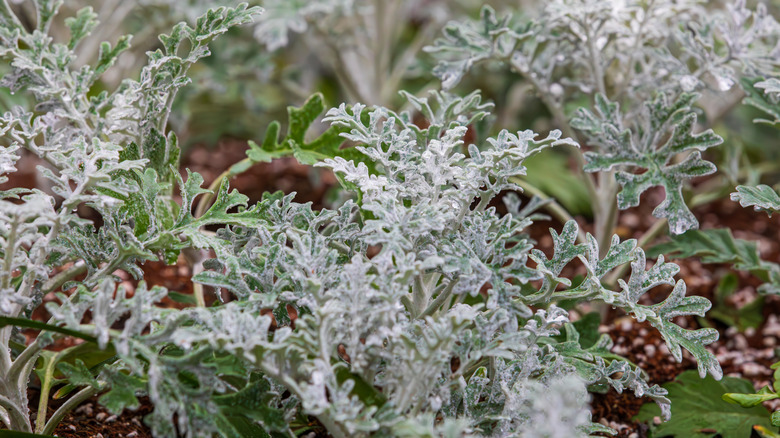The Perennial To Plant In October For Stunning Silver Foliage All Winter Long
If you're searching for plants with silver foliage to include in your fantasy garden, Jacobaea maritima, most commonly referred to as dusty miller, is a great choice. Formerly known by the scientific name Senecio cineraria, this unique perennial is instantly recognizable thanks to its silver foliage, which can add stunning visual interest to any garden. Not only do some varieties' leaves look like lace, but they're actually covered with fine hairs that make them look like they're made out of felt or wool, creating a special frosted look.
Originally hailing from the Mediterranean, dusty miller requires full sunlight to thrive, but it also does surprisingly well during cold winter months. When planted in October, this subshrub can make it through the winter in USDA hardiness zones 7 to 10 and has even been known to be winter-hardy in frigid zone 4. And while dusty miller tends to act as an annual in colder climates, those dealing with milder temperatures will often see their plant perennialize. Some will even bloom after their first year, growing small flowers reminiscent of daisies. Interestingly, though, many gardeners choose to trim these off in order to maintain the focus on the unique silver leaves. After all, that velvety texture can add a hint of luxury to any garden perfectly well on its own.
How to add silver-leafed dusty miller to your garden
To properly grow and take care of a dusty miller plant, you'll need one thing above all else: sunshine. This plant requires loads of it – 6 to 8 hours daily – and should be placed in a spot with plenty of sunlight and, ideally, minimal shade. Otherwise, it requires almost no intervention and no pruning, thriving in well-drained soil with minimal fertilizer. However, it does prefer a slightly acidic earth with a pH of 6 or less.
This silver-leafed beauty can be planted outdoors and indoors, both in the ground and in containers. In terms of spacing, 6 to 10 inches should be enough to allow the dusty miller to plant deep roots and grow upwards of 18 inches tall and 12 inches wide. And while potted versions won't grow as large, they'll still make a great addition to any patio, balcony, or sunny windowsill. In addition to easy maintenance, another upside is that it's immune to most pests and diseases. Dusty miller's biggest perk, though, is that it fits with almost any yard's aesthetic, as it can help bright flowers pop or add a lush, unexpected texture to a more neutral palette. Not to mention it's just as pretty at nighttime when it reflects the moon's light and shimmers to the point of almost glowing.

